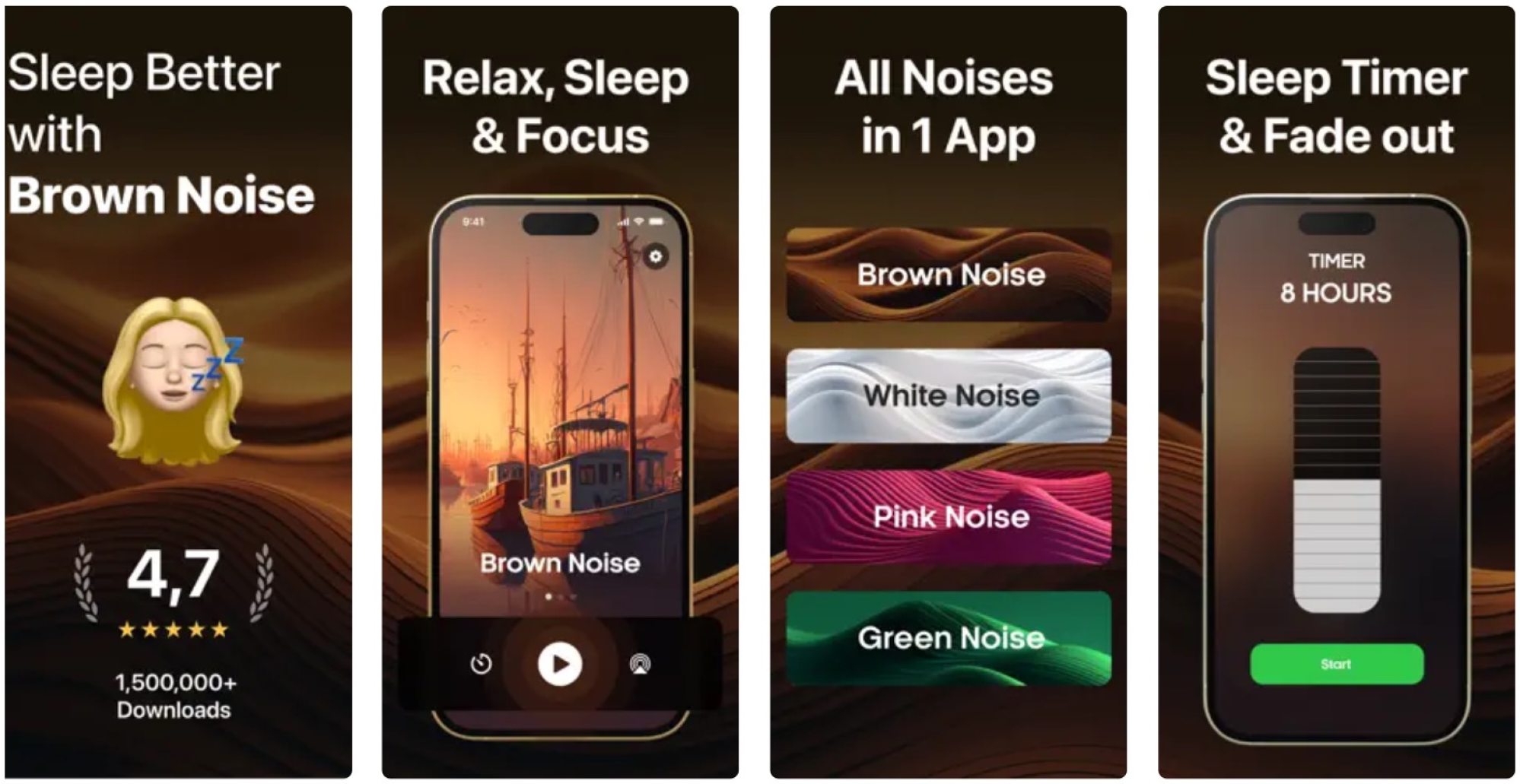
Brown noise explained: how it can improve ADHD patients’ focus and help you, and your baby, get a good night’s sleep
- Brown noise, a mixture of sound frequencies at a lower pitch than white or pink noise, has a positive effect on people with ADHD or anxiety, and newborns
- The noise – the sound of heavy rainfall, for example – is similar to what a baby hears in the womb; brown noise playlists and sound machines can help them sleep
You’ve probably heard of white noise, random frequencies all at the same level. But are you aware of brown noise?
This sound has been making waves, especially among the attention-deficit/hyperactivity disorder (ADHD) community on social media platform TikTok, where the #brwnnoise hashtag surpassed 86 million views last year.
Gushing online testimonials – from fans saying how brown noise has improved their focus, helped them relax and sleep better – have further amplified interest in its therapeutic benefits.
One viral video shows user @NatalyaBubb trying brown noise and wondering: “Where did all the thoughts go?” Another says: “I closed my eyes and literally thought of NOTHING … it makes my brain feel soft in the best way possible.”
And a writer with ADHD says of listening to brown noise that it is “like a soft weighted blanket that I’ve safely swathed my brain in”.
So what is brown noise, and are the lauded health benefits real?
How the ears work and the best ways to keep yours healthy – for life
“Brown sounds are sonic hues akin to the sound of a low roar. They’re soothing, steady, rumbly,” says Dr Pratibha Dogra, a specialist in respiratory and sleep medicine at W-Pratiksha Hospital, Gurgaon, in India’s northern state of Haryana.
The sounds of heavy rainfall or rustling winds that induce a sense of comfort and calm fall under this category, Dogra adds.
“People feel calm and focused with some pleasing ambient sounds. Brown noise triggers relaxation because of its similarities to the brain’s resting state. Its lower frequency creates a deeper sound that helps people relax,” she says.
“There are even brown noise playlists curated for babies, as it’s said to replicate the sound inside a mother’s womb. There are also brown noise sound machines, as well as phone apps that recreate sounds of a fountain, ocean or a river stream.”

The “brown” in brown noise isn’t a colour, but a reference to Scottish botanist Robert Brown. In 1827 he discovered Brownian motion: the random movements of suspended particles because of collisions with fast-moving molecules in a liquid. Brown noise mimics that motion, with signals changing randomly and producing static.
The practice of naming noises after colours started with white noise, which has been explored as a therapeutic option for people with ADHD.
In a 2010 study, published in the journal Noise Health, pink noise was found to be beneficial for the elderly and helped improve their sleep quality.
Violet noise, considered among the higher-pitched noise colours, helped in treating tinnitus, according to the Sleep Foundation, a specialist media outlet based in Seattle, Washington.

Studies have indicated that brown noise can help people manage anxiety and sleep longer. It makes them less reactive to ambient sounds, and that helps them fall asleep and also to concentrate better, says neurophysiotherapist Dr Himani Dalmia, co-author of the book Sleeping Like A Baby.
According to a 1990 study published in the Archives of Disease in Childhood, out of 40 newborns studied, 80 per cent fell asleep within five minutes of listening to white noise; brown noise is a variation of it.
Its low rumbling quality makes it more soothing than the higher frequency white and pink noises, Dalmia says.
How to sleep better: eight sleep aids to get your 7 or 8 hours a night
White noise has been shown to improve sleep and some cognitive tasks for children with ADHD; brown noise has been shown to improve deep sleep and slow-wave REM sleep.
Both stages are important for memory consolidation and learning.
Babies are sensitive sleepers because their sleep biology is immature.

“Staying in light sleep is actually a survival mechanism for them. Moreover, like adults, they wake at the end of sleep cycles but, unlike adults, they usually cannot start the next sleep cycle on their own and need soothing by a parent.
“They are not capable of self-regulation due to an underdeveloped prefrontal cortex,” Dalmia says.
Falling asleep and staying asleep can be delicate processes, and parents often go to great lengths to ensure nothing stimulates or disturbs the baby.

White noise or brown noise can create a natural sound that masks the noises of modern life, such as cars, doorbells, food mixers or televisions.
She recommends placing noise machines a few feet away from babies and keeping the sound level under 70 decibels.
Ideally, the noise should sound natural – like the sound of rain or a shower running.

“From this point of view, white or brown noise can be extremely helpful for baby sleep. It can help feed the baby’s distractible brain some stimulus and reduce distractions,” Dalmia says.
She adds: “Scientific research on these coloured noises is at a nascent stage. So until large-scale scientific studies are conducted, no particular noise can be recommended over another.”

